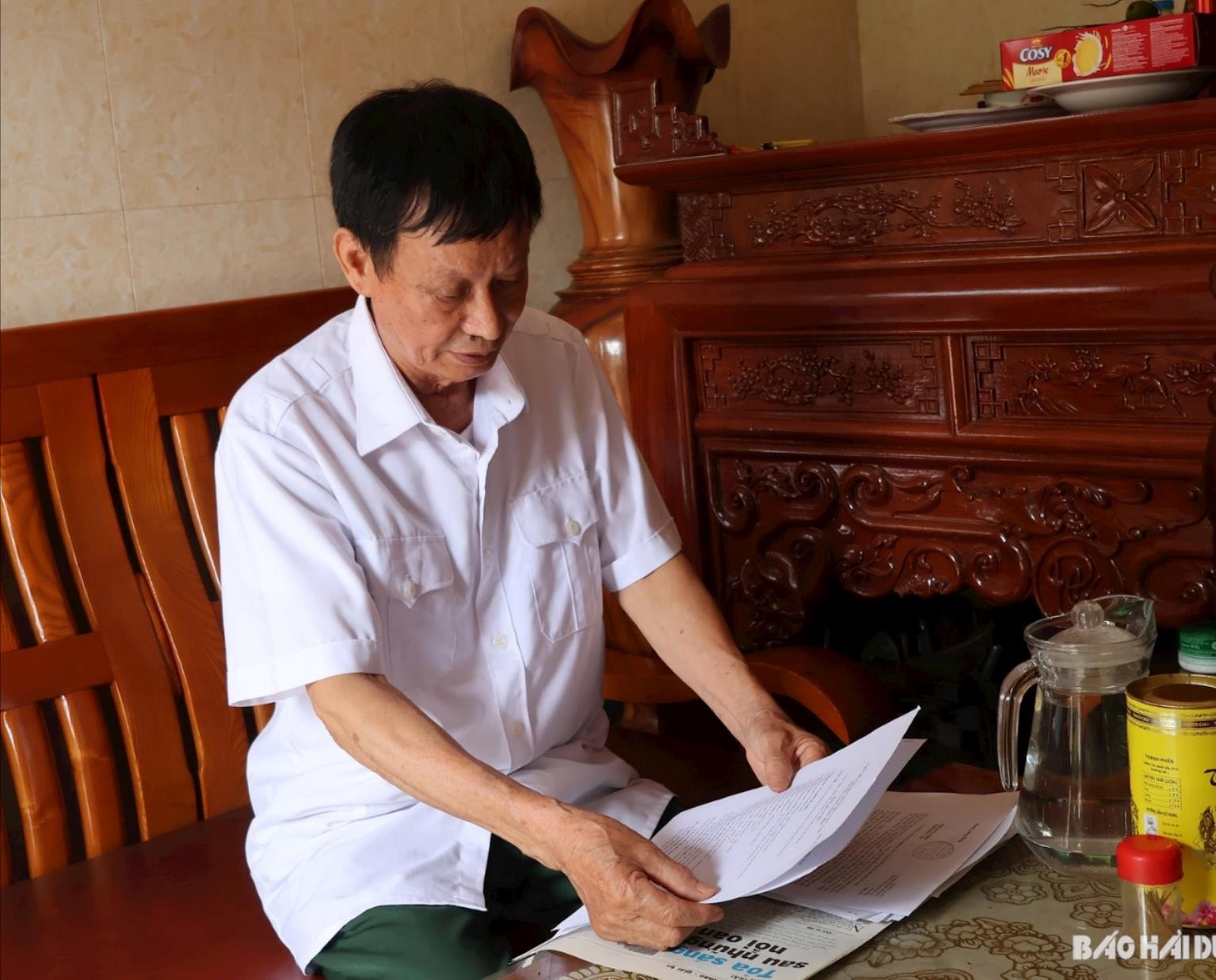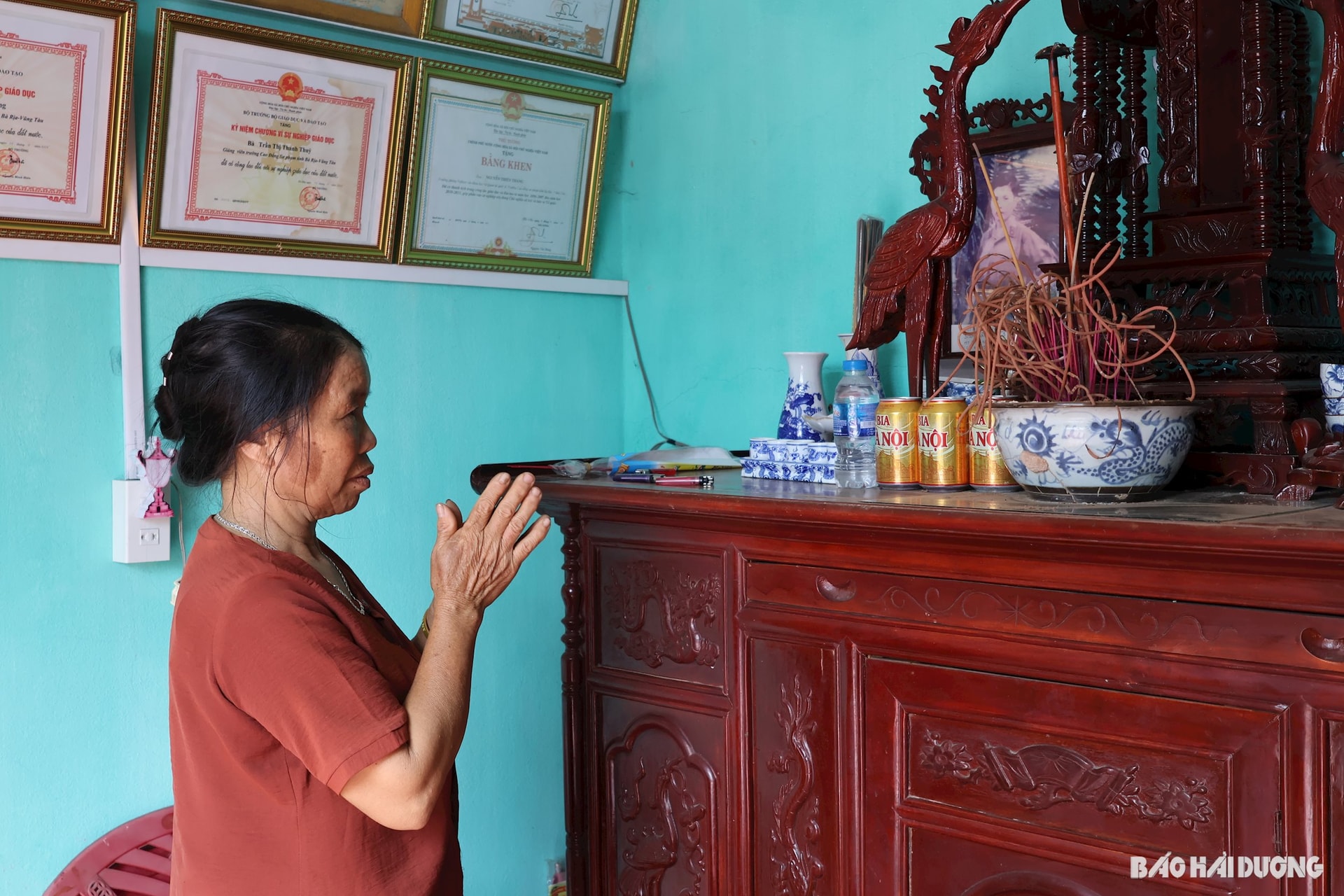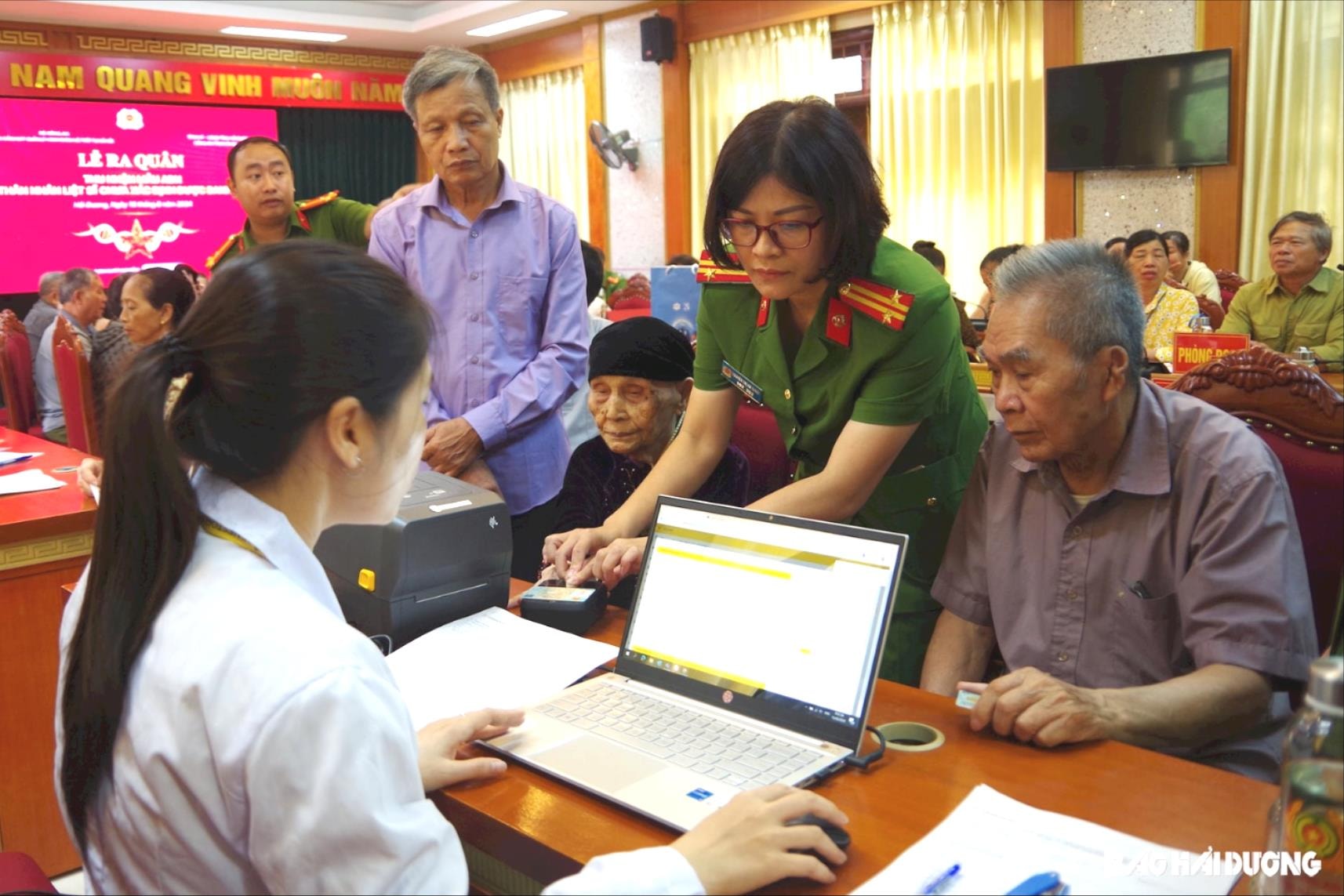
Longing for the day we meet again
For nearly 50 years, Mr. Nguyen Thanh Canh (76 years old) in Ung Mo village, An Duc commune (Ninh Giang) has always been concerned about finding the grave of his younger brother, martyr Nguyen Duc Tho.
Following the sacred call of the Fatherland, in 1968, young man Nguyen Duc Tho enlisted in the army at the age of 18. At the same time, Mr. Canh was fighting in the Southern battlefield.
Mr. Canh was lucky to return home after the war, but his younger brother Nguyen Duc Tho remained on the battlefield. According to the death certificate, martyr Nguyen Duc Tho died on August 24, 1971, on the southern front.
The old, time-stained file that Mr. Canh’s family has cherished and kept like a treasure for the past several decades is all he has about his fallen brother. All efforts to find information about the martyr’s grave in the past have been fruitless.
Last May, Mr. Canh’s family was very excited to be one of the families to have DNA samples taken from a martyr’s relative. This was a source of encouragement and sparked hope in the search for Mr. Canh’s younger brother’s grave.
"Before my parents passed away, they were still worried about finding their son's remains. Therefore, the family's greatest wish is to find my brother's grave soon and bring him back to the local cemetery for burial so that it will be convenient for future visits and care of the grave," said Mr. Canh.
Since receiving the death notice of her brother, martyr Nguyen Thien Quyet, Mrs. Nguyen Thi Bong in Chi Minh commune (Tu Ky) has always been worried because she did not know where her brother lay in the cold, wild forest. Many times she searched unsuccessfully, the journey to find the martyr's grave sometimes fell into despair.

Last May, Ms. Bong was very emotional when she received a notice from the local government to take DNA samples to compare and find the identity and grave of her brother who died in the resistance war against America.
"This is the humane policy of the Party and State towards those who sacrificed their blood and bones for the independence of the Fatherland, meeting the hopes and aspirations of not only my family but also many families who have not yet found information about the martyrs," Ms. Bong said emotionally.
The war has ended, but there are still many martyrs on the battlefield whose remains have not been found or whose identities have not been determined. According to statistics from the authorities, Hai Duong still has nearly 22,000 martyrs whose identities have not been determined. Therefore, the work of searching for information and collecting martyrs' remains is not only a responsibility but also a command from the heart, urging those on duty to continue their journey to meet the expectations of relatives of those who have contributed.
In August 2024, Hai Duong province organized a campaign to collect DNA samples of relatives of unidentified martyrs.
Up to now, the whole province has deployed 2 rounds, taking 44 DNA samples of martyrs' relatives, and updating information on martyrs, martyrs' relatives, and martyrs' graves into the National Population Database system.
DNA sampling is carried out scientifically , strictly, and according to procedures, in which priority is given to taking samples from the martyr's mother and relatives, because this is a direct bloodline gene, giving high accuracy.
To ensure the synchronous, continuous and effective implementation of the task of collecting DNA samples for relatives of martyrs whose identities have not been determined, relevant departments and branches in Hai Duong coordinate to review and compile information on the remains of martyrs whose identities have not been determined and the information on the remains of families whose martyrs have not been determined, and to collect samples for comparison; update the National Population Database system according to the category of martyrs' relatives.
Sacred gesture

According to the Steering Committee for the search, collection and identification of martyrs' remains in Hai Duong province (Steering Committee 515), in the period of 2021 - 2025, the Steering Committee 515 of the province has searched for and collected 6 martyrs' remains. The Department of Home Affairs has coordinated with the Provincial Police to guide and collect 32,999 information cards for martyrs, martyrs' relatives and martyrs' graves. The Department of Home Affairs has issued 97 letters of introduction to martyrs' families to move martyrs' remains to their localities.
Based on the list of martyrs initially buried in Hai Duong province sent by the Policy Department, General Department of Politics and units and localities nationwide, from 2002 to early 2023, the Provincial Military Command directed specialized agencies to coordinate in reviewing, separating and disinfecting 1,690 martyrs' remains. Of which, 1,429 cases of martyrs were initially buried in the province, 261 cases of duplicate martyrs.
With tireless efforts, up to now, Hai Duong province is assessed to have basically no more martyrs' graves in the area that have not been searched for and gathered.
Mr. Nguyen Tuan Anh, Chairman of the People's Committee of Chi Minh Commune (Tu Ky) said: "The DNA samples of the martyrs' relatives were collected as a sentiment, responsibility and deep gratitude in the process of searching and returning the names of the heroic martyrs. This is the best preparation step for the journey of searching, verifying and bringing the martyrs back to reunite with their relatives and homeland."
Comrade Nguyen Minh Hung, member of the Provincial Party Committee, Vice Chairman of the People's Committee of Hai Duong province, Head of the Provincial Steering Committee 515, emphasized that the work of searching, collecting martyrs' remains, and identifying martyrs' identities has always been considered by Hai Duong province as an important political task and also a key task in implementing the military rear policy and the gratitude movement. All levels and sectors continue to vigorously implement the collection of DNA samples, improve the capacity of electronic data management, and connect with the National Population Database. This is also the best preparation step for the work of searching and identifying heroic martyrs.
NGUYEN THAOSource: https://baohaiduong.vn/thap-len-hy-vong-xac-dinh-danh-tinh-liet-si-o-hai-duong-414931.html


![[Photo] General Secretary To Lam, Secretary of the Central Military Commission attends the 12th Party Congress of the Army](https://vphoto.vietnam.vn/thumb/1200x675/vietnam/resource/IMAGE/2025/9/30/9b63aaa37ddb472ead84e3870a8ae825)
![[Photo] The 1st Congress of Phu Tho Provincial Party Committee, term 2025-2030](https://vphoto.vietnam.vn/thumb/1200x675/vietnam/resource/IMAGE/2025/9/30/1507da06216649bba8a1ce6251816820)
![[Photo] Solemn opening of the 12th Military Party Congress for the 2025-2030 term](https://vphoto.vietnam.vn/thumb/1200x675/vietnam/resource/IMAGE/2025/9/30/2cd383b3130d41a1a4b5ace0d5eb989d)

![[Photo] President Luong Cuong receives President of the Cuban National Assembly Esteban Lazo Hernandez](https://vphoto.vietnam.vn/thumb/1200x675/vietnam/resource/IMAGE/2025/9/30/4d38932911c24f6ea1936252bd5427fa)
![[Photo] Panorama of the cable-stayed bridge, the final bottleneck of the Ben Luc-Long Thanh expressway](https://vphoto.vietnam.vn/thumb/1200x675/vietnam/resource/IMAGE/2025/9/30/391fdf21025541d6b2f092e49a17243f)

































































































Comment (0)